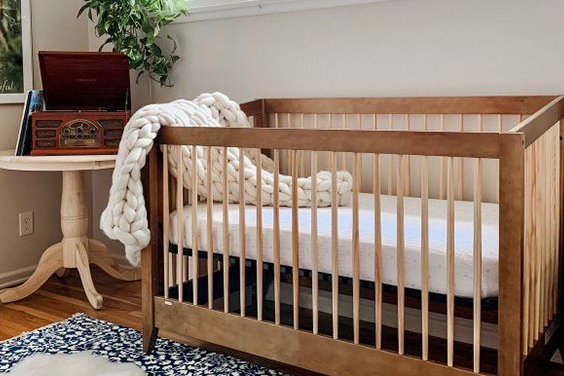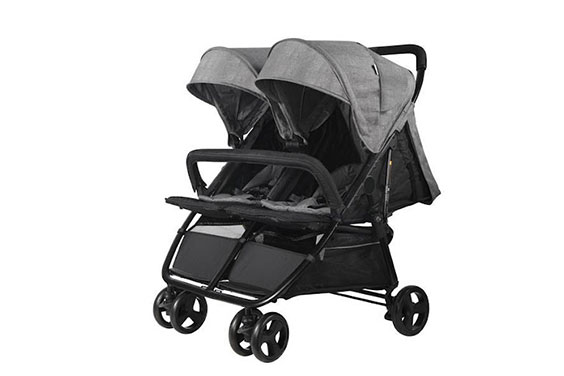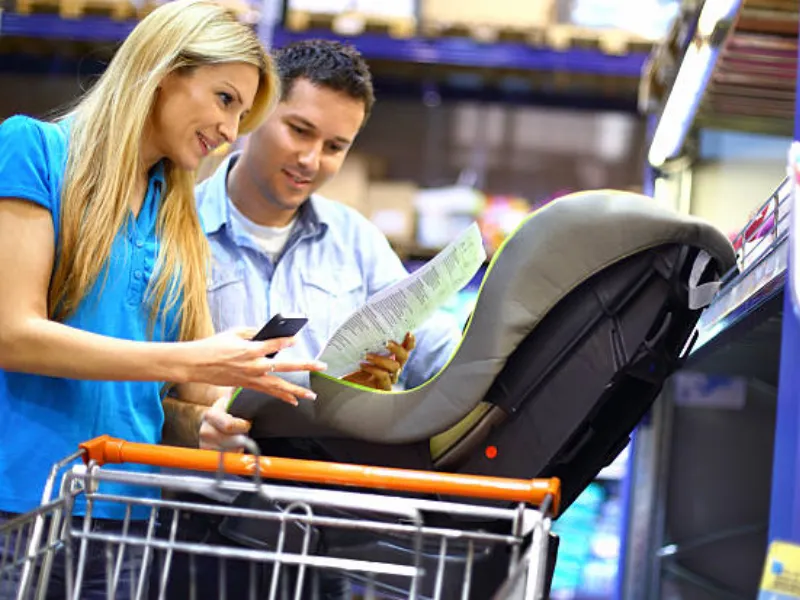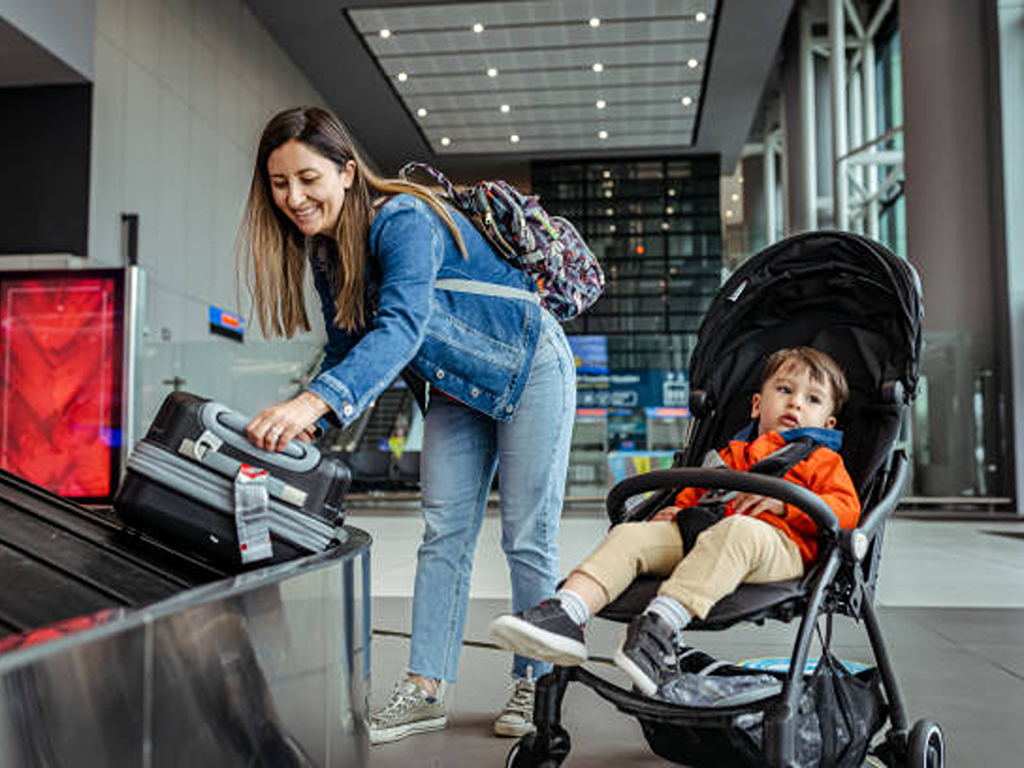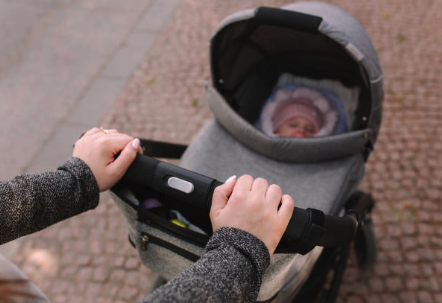Introduction

It is such an exciting milestone to be able to feed your baby at the dinner table for the first time! It’s rather a pleasure to observe your child discovering new tastes, laughing while trying new food and communicating with family members during the mealtimes. But the question on many parents’ minds is: at what age can a baby sit in a high chair? This time is not only about feeding the baby with some new type of solid food but also about the baby’s developmental milestones and safety concerns. In this blog, we will explain everything you need to know about how to safely start your baby on a high chair.
Benefits of Using a High Chair
Your baby enjoys numerous advantages when sitting in a high chair that supports their growth and protection during meals. Here are some of the key advantages:
- Encourages Social Interaction and Family Meals
With a high chair in place your baby can enjoy meals with everyone around the dinner table. This enables them to participate fully in family meals and boosts their social skills at a young age. When seated at the table with everyone else, your baby can see how adults and siblings dine and utilize utensils. By observing talks and adopting meal behavior, your infant can support their language development.
- Promotes Good Posture and Physical Development
To support their growth while seated and ensure their safety a high chair provides the right environment for babies to develop healthy sitting position. With a 5-point safety harness and adjustable seats your child will enjoy a safe and upright sit. By doing this, they improve their ability to control their head and neck—essential skills for an infant’s growth. Being in an upright position enhances digestion for your baby as they begin to eat solid meals.
- Provides a Safe and Convenient Space for Mealtime
Your child can safely try new meals in a high chair which reduces the possibility of falling or sliding like with a typical chair. Features like a locking mechanism, safety straps, and a removable tray keep your baby secure and make it easier for you to clean up any mess after mealtimes. The shape and construction of high chairs help prevent choking hazard. As they ensure your baby remains upright and supported while they eat.
- Promotes Independence and Feeding Skills
With a high chair your baby can explore self-feeding in their personal space as they advance. The presence of a tray helps them to collect little food pieces and boosts their hand-eye coordination and fine motor development. With increased independence in feeding activities, your baby can experience joy at mealtime while engaging in their role more actively.
When Can a Baby Start Using a High Chair?
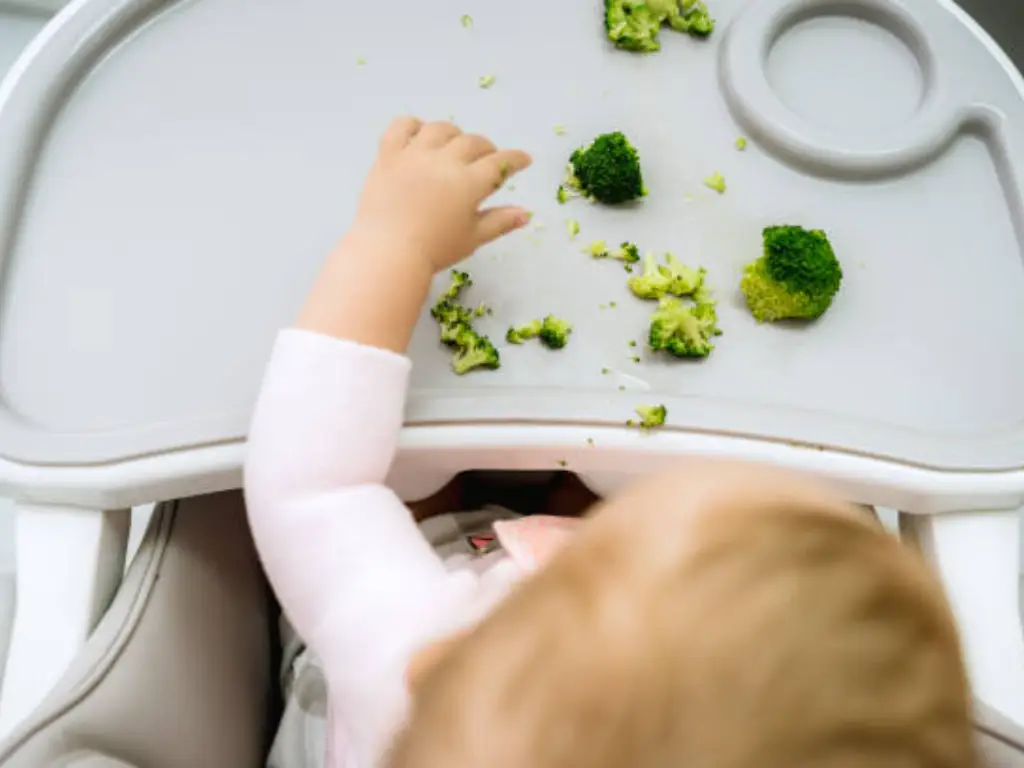
When is the time for a baby to use a high chair? Typically, infants are ready for a high chair between 4 to 6 months while each child follows their own timeline. Make sure to judge readiness through development markers and not just by age. Key readiness signs assist you in determining if your baby can use a high chair.
Key Indicators of Readiness:
Strong Head and Neck Control
An important signal that your baby can handle a high chair is the stability of their head and neck. For babies to sit comfortably upright they must have firm head control. This level of control usually develops between four and six months. For added stability in the high chair, they need extra help but must already have that fundamental control.
Ability to Sit with Minimal Support
Sitting with some autonomy is another sign that your baby may be prepared. Although not fully supported in sitting alone, they can maintain a seated position with little assistance for several minutes. This proves their muscles are ready to support their position in a high chair.
Reaching for and Grasping Objects
When your baby grasps for toys or food, it could mean they are prepared for the high chair. When your baby reaches and grasps objects, it signifies progress in their fine motor development vital for self-feeding and joining in on meals.
Showing Interest in Family Meals
Young children frequently express their desire to engage with family meals by looking at what is on your plate or striving to reach for your food. If your child finds the dining table intriguing, it might be time to let them experience meals in their high chair.
Your baby is probably prepared to have meals in a high chair if they show these signs. Children vary greatly, so if you are unsure, get in touch with your pediatrician for directions.
High Chair Safety Guidelines
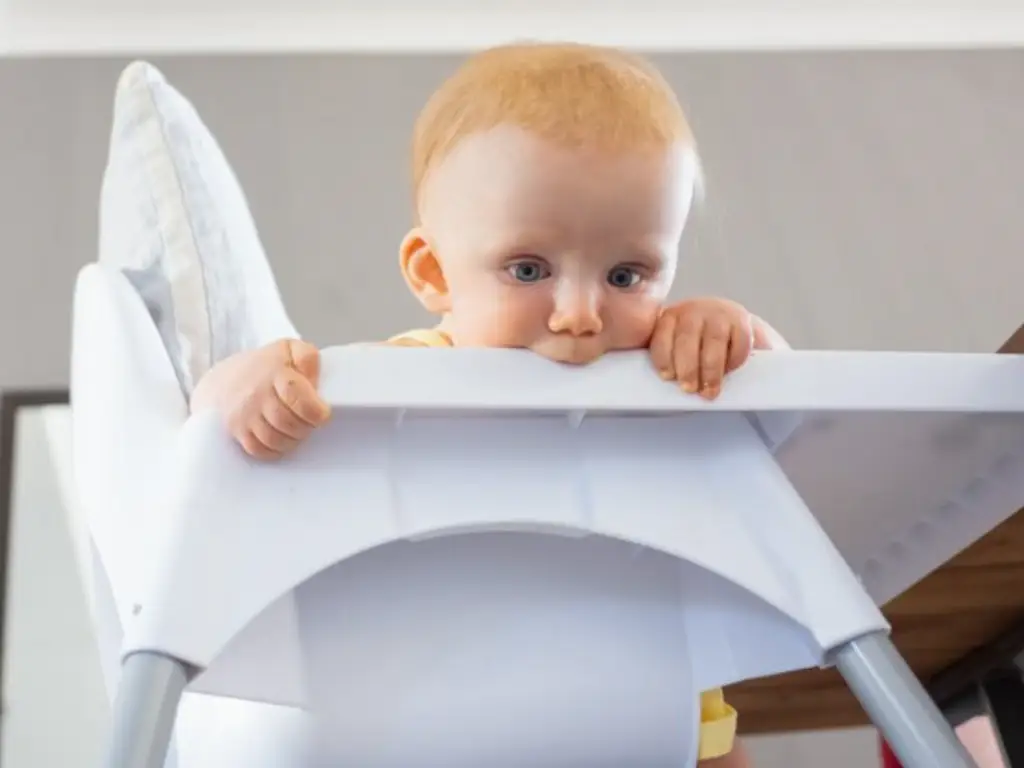
Protecting your baby in a high chair is vital. Here are some safety tips to keep in mind to make mealtime secure and comfortable for your little one:
- Use Safety Straps or Harness: To secure your baby in the chair properly use the given 5-point safety harness or safety straps. This keeps them from slipping or rising which diminishes the possibility of falling. Make sure the harness fits tight enough yet doesn’t restrict your baby too much. Buckle it each time you set your child in the seat, even for a brief moment.
- Ensure Stability and Meet Safety Standards: Meeting the standards set by the Juvenile Products Manufacturers Association (JPMA) or the Consumer Product Safety Commission (CPSC) will help you make sure your high chair is secure. Check for a JPMA label since it shows the chair has met strict criteria regarding durability and locking mechanism performance. Make sure to review the CPSC regulations which center on the durability of the frame and the avoidance of sharp points or instability. Your baby should not cause the high chair to shake while they are active during mealtimes.
- Position the High Chair Properly: Place the high chair on a smooth and uniform surface at all times. Avoid placing it near walls or tables to stop your child from leaning and falling. Double-check for any loose tablecloths or cords that your baby might grab and consider them choking risks.
- Supervise at All Times: Make sure you never walk away from your baby in a high chair. Even when babies are fixed in place they may wiggle or fling food creating surprising issues. Being close by helps you act quickly if they seek support or if food turns into a choking threat.
- Regularly Inspect for Wear and Tear: Search your high chair consistently for wear and broken parts in safety fixtures. Ensure that the chair’s detachable tray locks firmly and has no wear that may threaten safety.
Adopt these safety strategies and check that your high chair satisfies important safety criteria to guarantee your baby’s chair is a reliable and delightful spot for exploring food and interacting with others.
How to Introduce Your Baby to a High Chair
It’s an exciting milestone when you introduce your baby to a high chair, but it does take a little patience and encouragement. First, it’s a good idea to get your baby used to the high chair gradually before you begin mealtimes. Put your little one in the chair for a short time without food, so they can explore and get used to this new space. By singing or talking to them warmly you can make it fun, getting their favorite toys out to do the same. This will assist your baby to be more comfortable with the high chair and see it as something good and friendly while it doesn’t look like something new and scary.
When your baby seems more at ease, it’s time to introduce food into the mix. The first few feeding sessions can be kept short and simple to ease them in, soft foods like purees or gentle finger foods will make it enjoyable, and it’s helpful to sit with them, maintaining eye contact and engaging positively. They found it encouraging them to stay in the chair and that reinforces this as a normal part of their routine.
Lastly, if you are to make the shift smoother, include your baby in family meals at dinner table. Let them see the family eating and talking, which adds life and fun to the mix. If you do it over time this will allow your baby to feel more comfortable and confident in their high chair.
What to Look for in a High Chair
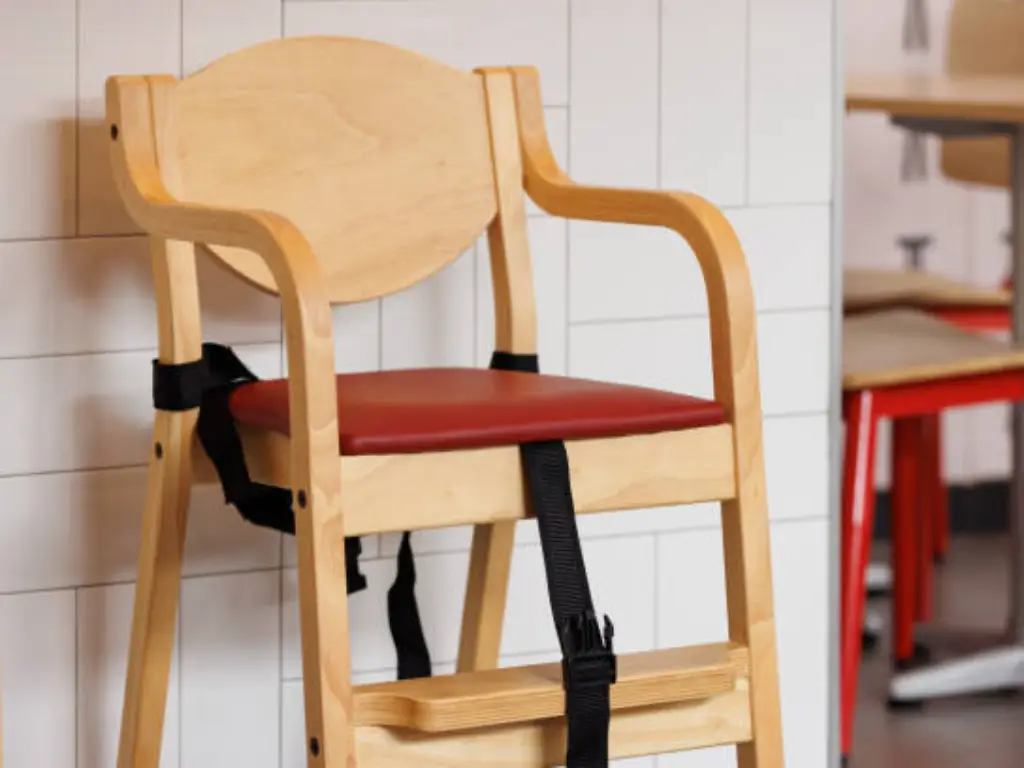
For safety, comfort and convenience, choosing the right high chair for your baby is important. Here are several key factors to consider when making your selection:
- Safety Features: It’s always important to prioritise safety. Check whether the high chair you’re looking at comes with 5 point safety harness or safety straps. It makes sure your baby is securely strapped in and won’t slip or stand up. In addition, inspect a solid base and dependable holding responsible for maintaining the seat fixed and stopping it from going unanticipated.
- Adjustability and Comfort: Your baby will grow, so a good high chair should be adjustable. So check for the options to change seat height and backrest angle to adjust it with your child growing and his or her control of head and neck getting better. Moreover, it’s important that you see to how comfortable it is, therefore, go for chairs that have padded seating and adjustable footrests to ensure your baby has a good posture during meals.
- Ease of Cleaning: Since mealtime can get messy, it’s important to choose a high chair that’s easy to clean. Ideally, you will want to look for a model that features a removable tray that you can easily wash and materials that can wipe down easily or even machine washable. A chair with little crevices or fabric can also make cleanup easier and save you time after meals.
- Materials and Health: When choosing a high chair, make sure to check the material that had been used. Choose BPA free plastic or wood that is non toxic and free of harmful chemicals, so that it is safe for your baby. Don’t sit in chairs with sharp edges or painted surfaces that may contain lead. Also, search for upholstery that is made from breathable, easy to clean fabrics that will help your baby feel comfortable and healthy while eating.
- Durability and Portability: Think about what the high chair was made of. It should be sturdy and durable enough to last daily use over your baby’s lifetime. If you have limited space, then you may want to search for a foldable option that allows for easy storage. Some high chairs convert into booster seats, giving you versatility as your child moves from the high chair to a regular seat at the table.
If you keep these factors in mind, you will be able to pick a high chair that is safe, conducive to comfort and getting the best out of the food your baby eats while for mealtimes.
River Baby: A Trusted Manufacturer for Safety and Comfort
River Baby is a trusted manufacturer for retailers who want high quality high chairs that are safe and comfortable. Our products are designed with a rigorous safety standards in mind and offer safety straps, locking mechanisms and ergonomic designs. Team up with River Baby to help you provide your customers with stylish, long lasting solutions that transition your customers’ little ones smoothly. If you want to know more about our product range, contact us today!
